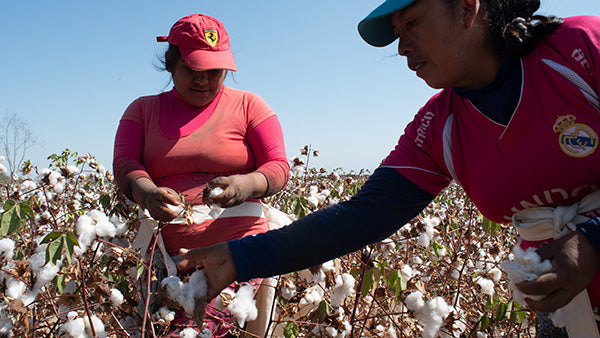
T-Shirt Timeline
From Seed to Shirt
It starts with a handful of organic Pima cotton seeds. The same seeds that have been passed down and replanted through centuries dating back to the Inca Empire of Peru. Sixteen months later, having passed through at least 97 pairs of hands, and with plenty of good luck, the seeds are transformed into the finest t-shirt you'll ever own.
Read on to learn about your t-shirt's journey from its humble origin on a family-owned cotton farm.
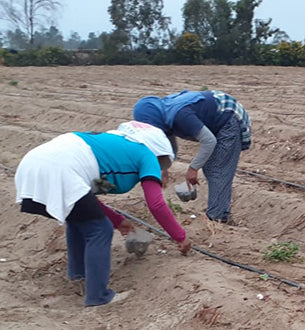
Planting the cotton seeds(16 months ago)
Our non-GMO cotton seeds are saved from the previous season's ginning process. The two family-owned organic cotton farms in Chiclayo and Pisco, Peru are chemical free and healthy. We keep the soil thriving by practicing complimentary farming. That means in the off season the land is used to grow quinoa - a crop that's ideal to keep the soil balanced all year round with the right minerals and ph. The Incas knew this in ancient times and it still works today!
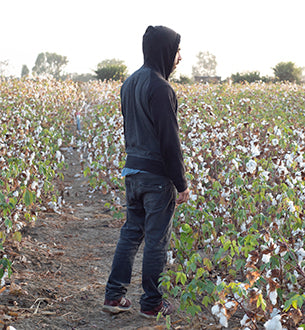
Tending the Cotton Plants(14 months ago)
Once the plants start growing, Mother Nature takes over for the most part. One farm's growing season is roughly November to April and the other April to November. Both get plenty of rain during the planting season and lots of sun during the growing season. In the case of unusually hot or dry weather, we use natural irrigation techniques to tap into snow melt runoff from the Andes Mountains.
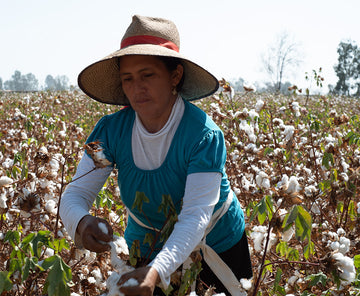
Harvesting the Cotton(10 months ago)
Unlike lesser quality cottons, our premium organic Pima cotton is harvested entirely by hand. Not only is it more environmentally friendly, it also ensures the cotton fibers are not damaged by industrial harvesting machines which can tear the fibers. By keeping the cotton fibers fully intact, the garment will be noticeably smoother and softer and, importantly, stronger over time too. Quite simply, Pima cotton creates garments that will endure much longer.
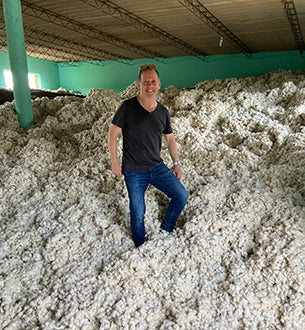
Storing the Cotton(10 months ago)
Depending on the timing of when it's needed for making yarns, the harvested cotton bolls are safely stored in facilities very close to the farms as they await the ginning process. This is our founder, Rob, in a storage facility housing a recent day's harvest in Chiclayo.
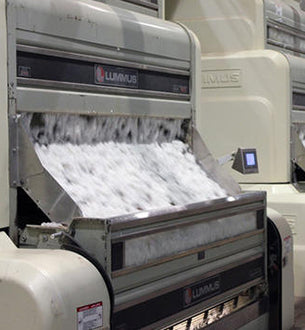
Ginning the Cotton(9 months ago)
Ginning is the process of separating the cotton fibers from the seeds and other parts of the plant. The cotton gin was invented in 1794 and revolutionized the production of cotton by vastly reducing the time spent on seed separation. The seeds are then gathered and sent back to the farm for planting the next season. The circle of life!
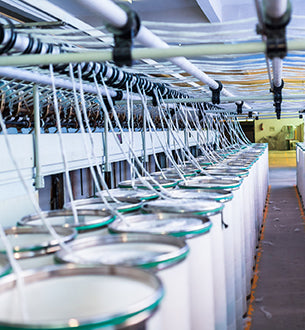
Spinning the Cotton into Yarns(9 months ago)
This is the first step where the raw cotton is processed into a truly different form - yarns. Bales of cotton are strung through a series of machines that first straighten and smooth the cotton into thick string-like shapes called slivers (pronounced sly-vers). Then the fibers from the slivers are spun at up to 2500 revolutions per second and twisted together into our signature organic Pima cotton yarns. This process usually takes about 4 weeks to process an entire season's order.
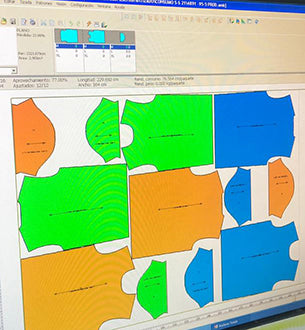
Calculating the Fabric Consumption(8 months ago)
A typical short sleeve t-shirt has 5 pieces that are sewn together - the front, the back, 2 sleeves, and the neck trim. If the t-shirt comes in 5 sizes, there are 25 different puzzle pieces to cut out of a panel of fabric to make one run of t-shirts. How to arrange and cut those pieces most efficiently is an art and a science, with the goal being to waste as little fabric as possible. Our cutting engineer accomplishes this with a combination of software and years of experience. His final result tell us exactly how much fabric we need to make!
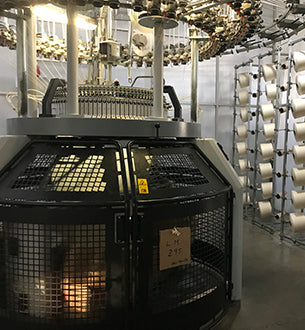
Knitting the Yarns into Fabric(7 months ago)
The machines that knit the yarn into our signature organic fabrics look like something off of a space ship. The precision devices are synchronized to pass dozens of strands of yarns through a track of needles arranged on a cylinder. The needles tightly loop together the yarns resulting in an incredibly smooth and soft base fabric. You can see a short video clip of this machine here.
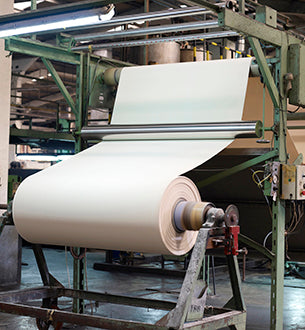
Enzyme Washing(7 months ago)
Before adding color, we take this extra step of passing the fabric rolls through a gentle enzyme bath. These natural enzymes dissolve tiny stray hairs from the cotton fibers giving the fabric a noticeably smoother feeling. It's then thoroughly rinsed. The final fabric is as pure and natural as you'll find. In cases where a t-shirt will be offered in an undyed color, a portion is sent directly to the workshop for cutting.
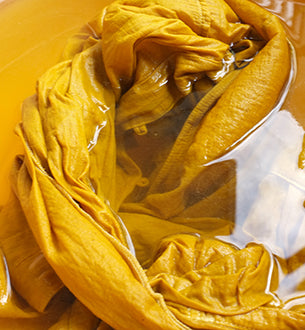
Dyeing the Fabric(6 months ago)
All of our dyes are certified to the most stringent safety standards such as the Oeko-tex 100 standard. They're tested for literally hundreds dangerous substances like Azo colorants, formaldehyde, pentachlorophenol, cadmium, and nickel. Our dyes meet or exceed the US Consumer Product Safety Improvement Act (CPSIA) regarding lead and the European Chemical Regulation (REACh).
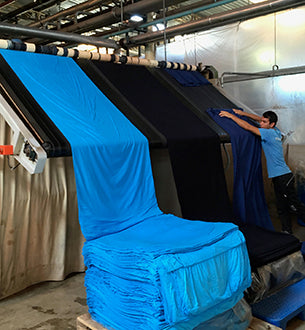
Pre-washing and Drying the Fabric(6 months ago)
This is one of the steps we take that sets our clothing apart. By washing the fabric before it's cut, we take out the vast majority of shrinking early. Not only does this prevent it from shrinking in your wash (very minimal with proper care), it also helps the seams stay smoother. When clothing makers skip this step (they usually do) the fabric puckers or curls around the seams. That's because the fabric shrinks more in the wash, but the seam threads don't.
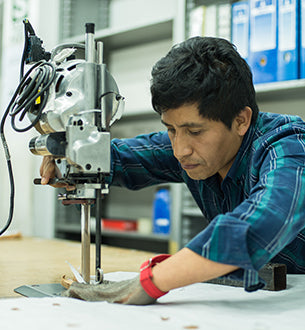
Cutting the Fabric(5 months ago)
All the work that went into the jigsaw puzzle of planning the fabric pieces comes to fruition in our cutting workshop. Artisans like Jonny very carefully cut the pieces that will be sewn together. As many as 50 layers of fabric can be cut at one time. You can see a short video clip of Jonny at workhere.
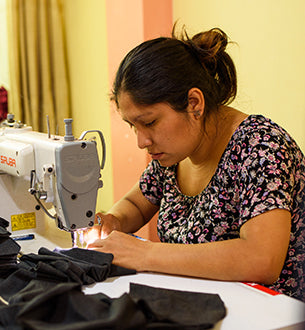
Sewing the Garments(4 months ago)
When most people think about making clothes, this is what they think about. Stitching the arm to the body, hemming the sleeves. Sitting at a sewing machine for a full workday is hard work. Julia and her husband Oscar own a 10-person workshop that has transformed the lives of neighbors who can now put their skills t work. Each of them deserves to be rewarded justly for their labor. We owe them such gratitude for literally putting shirts on our backs.
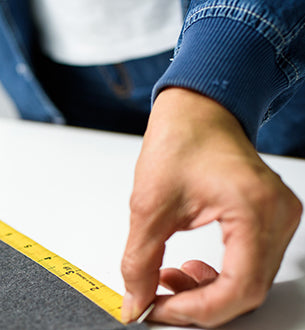
Quality Assurance(5 weeks ago)
As the clothing comes off the sewing line, it goes through a rigorous inspection. The inspectors check for things like fabric flaws, missed stitches, and stray threads. They also check garment measurements to ensure it's within tolerance of the specifications.
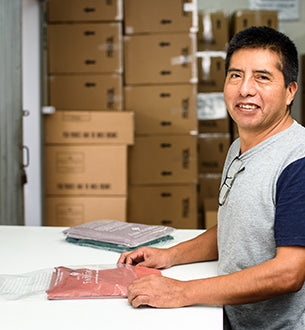
Packing(3 weeks ago)
Each piece of clothing gets a gentle hand steaming, is placed into our biodegradable polybags, and then packed into shipping cartons. This is often where unnecessary waste is added in the clothing industry. We made the conscious decision not to affix labels or hang tags to our garments. Daniel is smiling because this also makes his job much easier! You can read more about our environmentally friendly polybags here.
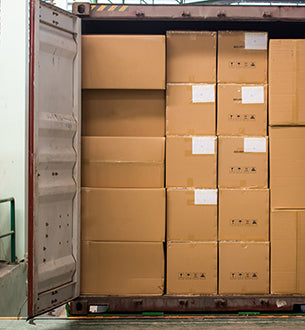
Shipping(2 weeks ago)
The day the team has worked so hard to make happen is finally here! The fruits of their labor are transported to the Lima airport, flown into the United States, passed through a US Customs inspection, and transported to our partner warehouse in St Louis. Occasionally, and usually at non-ideal times, the shipment gets randomly pulled for an intensive US Customs inspection that can add a couple of weeks to the time. Once the cartons arrive at our warehouse, they are unpacked, the product is placed in bins, and a signal is sent to our website to tell it your t-shirt is ready!
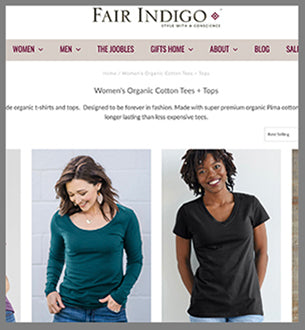
Product For Sale!(today)
16 months, at least 97 pairs of hands, and lots of TLC later, the shirts are ready for you to try on, hopefully fall in love with, and wear enthusiastically for years to come. The fair price you pay supports the supply chain of traditional organic farming, ethical fair trade production, and a small independent clothing brand. You can truly feel great about what you're wearing.